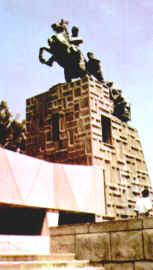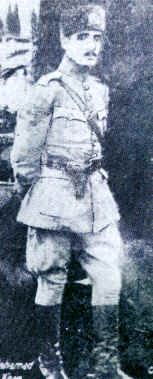|
|
Center of Khorasan Province
The municipality of Meshed is located in Northwest of Khorasan Province; it is surrounded by Qouchan and Dargaz cities from North, Republic of Turkmenistan and city of Sarakhs from East, Fariman and Torbat Heidarieh cities from South and Neishabour from West.
The municipality has an area of 27487 sq. km and a population of 2,038,388 (1986 Census). It is made up of two phenomena, mountain and plain. Its mountains are "Hezar Masjed" (1000 Mosques) and "Binaloud", which extend in parallel from Northwest to Southeast. Plain is fertile and water-full plateau, which originates in Binaloud and Hezar Masjed alluvium and is extended from Qouchan to Toroq.
The principal river is called "Kashaf-roud", which originates from the valleys of the above-mentioned mountains, flowing from Northwest to Southeast and having passed adjacent to the cities of Tous and Meshed, extends to East to meet Hari-roud in Pol-Khatoun border point. Now (2000), Kashaf-roud is suffering from lack of water throughout the most of the year, due to moorage and utilization, but in the past, it was a river flowing with water, people traveled by its banks and its value even had place in Iranian Mythology.
The capital of the municipality is "Meshed", located in Southeast of the plain, with the distance of 892 km from Tehran; its altitude is 985 m, with 204 sq. km area and 1,540,425 population (1986 Census).
After 1979, because of its increase in population, expansion and advances, especially because of huge investment of "Astan Qods Razavi" (Shrine of Imam Reza's Organization), Meshed became the second city (after Tehran) of Iran.
Meshed was first a village called "Sanabad" (until the late of 10th century AD), part of the city of "Noqan", located in Northwest of present Meshed and 1500 m from Noqan.
In that time, even until 12th century AD, Noqan was the largest of 4 regions in Tous; others were Taberan, Toroqbaz and Radkan. Sanabad, in the vicinity of Noqan, had pleasant climate; there were built villas for dignitaries in 11th century AD.
In 911 AD, Sanabad was a small village in suburbs of Noqan, enclosed by high and strong wall, where some people were meditating. In late 11th century, one of Masoud Qaznavi's clerks, called "Abolhassan Araqi" built caravanserai and cleaned the sewer in Sanabad.
In 1012 AD, when "Beihaghi" traveled to Sanabad, Sanabad and Noqan had expanded so far that they had became attached.
In mid-12th century, Noqan and Sanabad, in combination of a big city were known as "Meshed", became the center of aggression by "Qoz Clan"; people in the vicinity were killed and their belongings ransacked.
In 1197, Mongol invaded to Meshed.
Following the barbarous murder of "Miran-Shah" in Tous (1371 AD), those who escaped un-hurt migrated to Meshed. Shahrokh Timurid could not return them to Tous, so he ordered "Amir Seyed Khajeh" to construct a larger fence around Meshed (1388 AD).
Goharshad Mosque was built in 1401 AD. In 1403 AD, "Hafiz Abrou" declared Meshed as a credible place and one of the honored cities of Khorasan.
In the era of "Sultan Hussein Bayqora", the last Timurid King, his minister "Amie Ali Shir Navai (1456-1486) regained water of "Golasb Fountain" (now known as "Gilas") from Tous and transferred it through a canal, of approximately 42 km length, to Meshed. Tous desolated and Meshed raised.
In 1584 AD, Meshed was attacked by Uzbek. In Safavid era, it was the center of great attention. Shah Abbas (1576-1618 AD) placed his boots on his shoulders and walked from Isfahan to Meshed, to pilgrim. The highest point of attention was in "Nader Shah Afshar" period, where Meshed was chosen as capital. Qajar Kings also paid great attention to Meshed.

Nader Shah Afshar

Colonel Mohammad Taghi Khan Pesian
|
|


